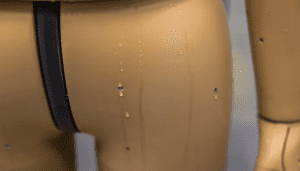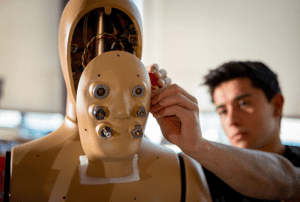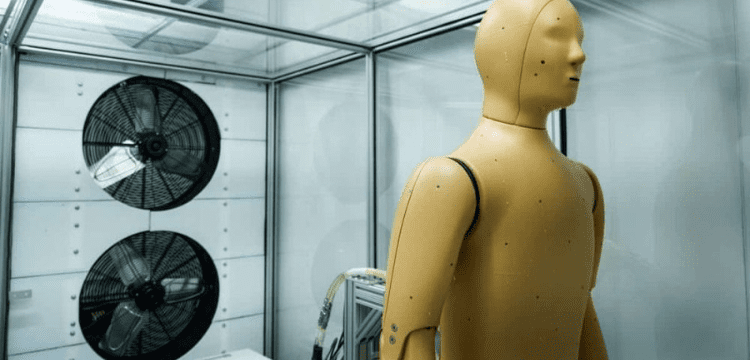[vc_row][vc_column][vc_column_text dp_text_size=”size-4″]According to Express UK, scientists have successfully constructed ANDI, a pioneering manikin with unique features such as possessing the same thermal properties as a human body.
ANDI possesses the extraordinary capacity to detect heat, imitate sweating, and do indoor-outdoor breathing. Furthermore, it features a staggering 35 unique surface regions.

ANDI’s creators at Arizona State University outfitted each of these surface areas with separate temperature sensors, heat flux sensors, and specialised pores that allow the manikin to simulate the creation of sweat beads, among other tasks.
ANDI will be used by Konrad Rykaczewski, an associate professor at the University’s School of Engineering of Matter, Transport, and Energy, to explore the effects of intense heat on human health.
Also Read: Searches for “Delete Snapchat” have increased by 488%. After AI Features Are Available to Everyone
ANDI perspires, produces heat, shivers, walks, and breathes. There is a lot of amazing work for extreme heat out there, but there is also a lot that is lacking. We’re attempting to gain a thorough grasp of how heat affects the human body so that we can build quantifiable solutions.
This novel manikin was created to help us better understand the effects of heat stress on persons and to shed light on the causes of life-threatening weather conditions.

To aid studies, the university has built a dedicated heat chamber in which scientists may conduct experiments exposing ANDI to diverse climatic conditions from around the world.
The controlled setting allows for the exact and regulated investigation of the consequences of heat exposure.
Jenni Vanos, associate professor at Arizona State University’s School of Sustainability, stated
We may import several BMI [body mass index] models, age characteristics, and medical issues [into ANDI]. A diabetic’s temperature regulation differs from that of a healthy individual. So, with our customised models, we can account for all of these changes.”
The team is working to create a new strategy to minimising the impacts of heat, which might include the development of cooling clothing or backpack exoskeletons specifically intended to give cooling support.[/vc_column_text][/vc_column][/vc_row]











